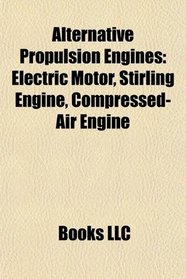Search -
Alternative Propulsion Engines: Electric Motor, Stirling Engine, Compressed-Air Engine
Alternative Propulsion Engines Electric Motor Stirling Engine CompressedAir Engine
Purchase includes free access to book updates online and a free trial membership in the publisher's book club where you can select from more than a million books without charge. Chapters: Electric Motor, Stirling Engine, Compressed-Air Engine, Minto Wheel. Excerpt: The Victor Tatin airplane of 1879 used a compressed-air engine for propulsion. O... more »
Purchase includes free access to book updates online and a free trial membership in the publisher's book club where you can select from more than a million books without charge. Chapters: Electric Motor, Stirling Engine, Compressed-Air Engine, Minto Wheel. Excerpt: The Victor Tatin airplane of 1879 used a compressed-air engine for propulsion. O... more »
ISBN-13: 9781155851747
ISBN-10: 1155851749
Publication Date: 5/7/2010
Pages: 68
Rating: ?
ISBN-10: 1155851749
Publication Date: 5/7/2010
Pages: 68
Rating: ?
0 stars, based on 0 rating




